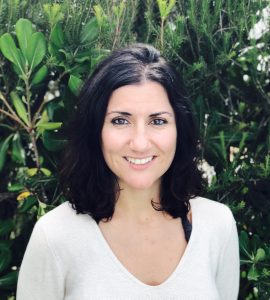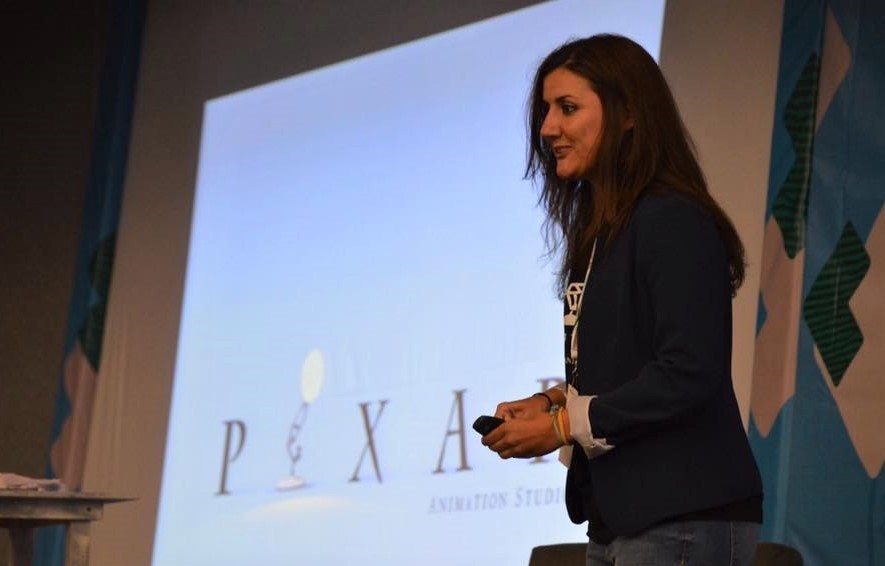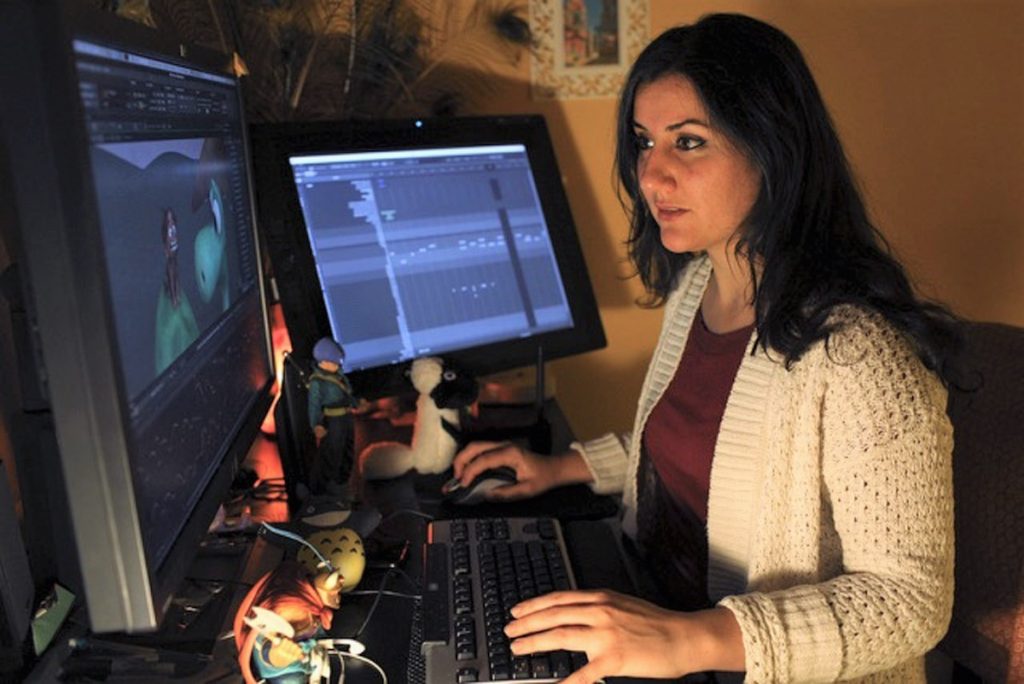Español
Estamos muy emocionados de conocer a una nueva mentora y animadora profesional, Carolina Lopez Dau, que está enseñando nuestro Taller de Maya en Español! Como ex animadora de Pixar, Carolina compartirá consejos y trucos de su extensa experiencia de animación y ayudará a los nuevos animadores a comenzar su propio viaje de animación. Animation Mentor: Cuéntanos algo sobre ti que los estudiantes no puedan aprender de una búsqueda en Google.
Carolina Lopez Dau: Practico meditación dos horas al dia. Dedicó gran parte de mi tiempo a hacer voluntariado administrativo en el California Vipassana Meditation Center para que la gente aprenda esta técnica de meditación gratuitamente y experimente los beneficios.
AM: ¿Cual es el personaje que mas te ha gustado animar y por que?
CLD: El personaje que más me ha gustado animar es Dory. Me encantaba animar su cara, sus ojos y sus cejas son muy expresivas. Me gusta su personalidad, ella es honesta como un libro abierto y tiene una fuerte determinación. Cuando yo me grababa a mi misma actuando como referencia haciendo de Dory, cuando ella tiene un momento donde pierde la memoria, sentia que me podía identificar con ella cuando hablo en ingles y no puedo recordar cómo decir alguna palabra – lo cual pasa a menudo.
Animation Mentor: Cuéntanos algo sobre ti que los estudiantes no puedan aprender de una búsqueda en Google.
Carolina Lopez Dau: Practico meditación dos horas al dia. Dedicó gran parte de mi tiempo a hacer voluntariado administrativo en el California Vipassana Meditation Center para que la gente aprenda esta técnica de meditación gratuitamente y experimente los beneficios.
AM: ¿Cual es el personaje que mas te ha gustado animar y por que?
CLD: El personaje que más me ha gustado animar es Dory. Me encantaba animar su cara, sus ojos y sus cejas son muy expresivas. Me gusta su personalidad, ella es honesta como un libro abierto y tiene una fuerte determinación. Cuando yo me grababa a mi misma actuando como referencia haciendo de Dory, cuando ella tiene un momento donde pierde la memoria, sentia que me podía identificar con ella cuando hablo en ingles y no puedo recordar cómo decir alguna palabra – lo cual pasa a menudo.

Carolina Lopez Dau at Pixar
Creo que haber nacido en Argentina y crecido en España ha influenciado mi animación, sobretodo en gestos con las manos y los brazos. También, los personajes tienden a tener menos espacio interpersonal.AM: ¿Cómo describirías tu estilo de enseñanza? CLD: Tiendo a confiar en una mezcla de estilos de enseñanza donde hay intercambio de opiniones y donde se delega en los estudiantes, con cierta dirección para ayudar a los estudiantes a alcanzar sus goles así como los objetivos del temario de clase. Uno de los aspectos más importantes en desarrollar la confianza, crear un espacio seguro para la colaboración. Suelo decir que la clase es como un laboratorio donde jugamos, experimentamos y aprendemos. Los argumentos unidireccionales no creo que son lo más productivo. Intento mantener humildad y la mente abierta para recibir lo que tengo que aprender de los estudiantes. AM: ¿Cuál es la parte más difícil de aprender Maya y cómo lo superarías? CLD: Cuando empecé a aprender Maya en la escuela lo más difícil para mi era intentar entender los elementos del programa que necesitaba usar para transmitir una idea y animarla; entender el timeline, organizar el graph editor, mover al personaje, limpiar las curvas, tangentes, … un dolor de cabeza! No era fácil… Como aprender a manejar por primera vez, puede ser abrumador prestar atención a todo sin chocar, pisar el embrague mientras sueltas el acelerador para cambiar de marcha, acelera, aguanta el volante, y sobretodo, llega a destino. Pero con tiempo, estas herramientas se vuelven más fáciles de usar y entonces nos podemos enfocar en aprender el Arte de la Animación!
Cuando empecé a aprender Maya en la escuela lo más difícil para mi era intentar entender los elementos del programa que necesitaba usar para transmitir una idea y animarla.AM: ¿Cuál es el mejor consejo que has recibido sobre la animación? CLD: Mantenlo simple, menos es más.
English
We are so excited to get to know new mentor and professional animator Carolina Lopez Dau, who is teaching our Maya Workshop in Spanish! As a former Pixar Animator, Carolina will share tips and tricks from her extensive animation experience, and will help new animators start their own animation journey. Animation Mentor: Tell us something about yourself that students wouldn’t learn from a Google search. Carolina Lopez Dau: I meditate 2 hours a day. I dedicate a large part of my time to doing volunteer administration work at the California Vipassana Meditation Center for people to learn this meditation technique and experience the benefits. AM: What’s your favorite character you’ve ever animated and why? CLD: My favorite character I’ve ever animated is Dory. I loved animating her face; her eyes and eyebrows can be quite expressive. I like her personality, she is an open book and has strong determination. When I was acting out Dory shots where she had a short-term memory loss moment, I found I could relate when I’m speaking in English and I can’t remember how to say something—which happens often.
Hard at Work on The Good Dinosaur
I do think that having been born in Argentina and grown up in Spain has influenced my animation, especially in some hand and arm gestures. Also, that characters tend to have less interpersonal distance.AM: How would you describe your teaching style? CLD: I tend to rely on a mix of discussing and delegating teaching styles, with some direction to help the students reach their goals and the class objectives. One of the most important things is to build trust, make it a safe space for collaboration. I used to call class “a lab” where we get to play, experiment and learn. I think one-way discussions aren’t the most productive. I try to remain humble and open enough to receive what I have to learn from the students. AM: What’s the most difficult part of learning Maya and how do you overcome it? CLD: When I started learning Maya in school the most difficult part for me was to try to understand the software’s elements I needed to use to convey an idea through animation; understanding the timeline, organizing the graph editor, moving the character, cleaning curves, tangents,… big headache! Not easy… Like driving a car with gears for the first time, it can be overwhelming to pay attention to everything without bumping into something; press the clutch and release gas pedal, change gear, gas again, hold the steering wheel and get to the destination. With time, these tools become easier to use, and we can focus most of our energy on learning the Art of Animation!
When I started learning Maya in school the most difficult part for me was to try to understand the software’s elements I needed to use to convey an idea through animation.AM: What is the best animation advice you’ve ever received? CLD: Keep it simple, less is more.
Carolina Lopez Dau is teaching our Maya Workshop: Animation Basics en Español in a cool combination of Spanish AND English. With credits like Coco, Finding Dory, Inside Out and many more, she’s the perfect mentor to help start your animation journey!



